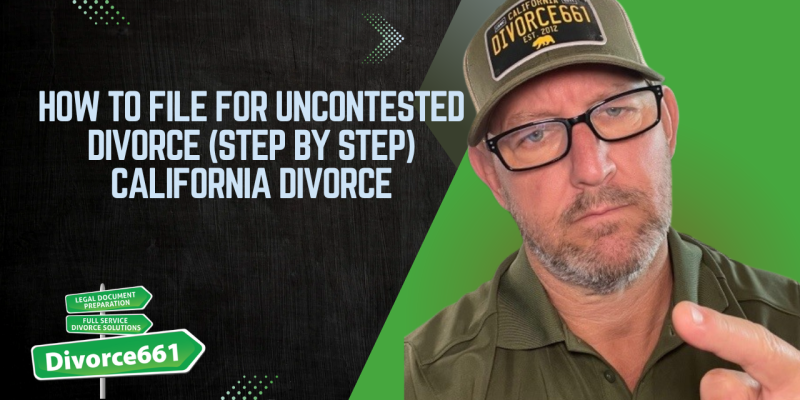🤗 Uncontested California Divorce Explained 🙄
Divorce can be a complex and emotionally challenging process, but it doesn’t always have to be. If you and your spouse can come to an agreement on all the important issues, you may qualify for what’s called an uncontested divorce. In this article, inspired by insights from Tim Blankenship of Divorce661, we’ll break down exactly what an uncontested California divorce means and why it might be the simplest path to ending your marriage.
What Is an Uncontested Divorce?
Simply put, an uncontested divorce means that both you and your spouse agree on every term of the divorce. This includes key matters such as property division, child custody, support arrangements, and any other relevant issues. Because there is mutual agreement, you do not need the court’s assistance to make decisions or resolve disputes.
Tim Blankenship puts it clearly: “An uncontested divorce simply means you and your spouse agree on all terms of the divorce and you do not need to get the Court’s assistance in coming to an agreement.”
Why Choose an Uncontested Divorce?
There are several benefits to pursuing an uncontested divorce, especially in California where the process can otherwise become lengthy and costly. Here are some key advantages:
- Faster resolution: Since both parties agree, the case can move through the court system more quickly.
- Lower costs: Avoiding contested hearings and lengthy negotiations can significantly reduce legal fees.
- Less stress: Cooperation between spouses means fewer conflicts and a smoother emotional process.
- More control: You and your spouse decide the terms rather than leaving decisions up to a judge.
How Does the Process Work?
In an uncontested divorce, you and your spouse typically work together to complete all necessary paperwork, including a marital settlement agreement that outlines your decisions on all divorce issues. Once filed with the court, and after any mandatory waiting periods, the judge reviews the agreement and issues a divorce decree.
This streamlined process eliminates the need for court hearings to resolve disputes, saving time and preserving goodwill between both parties.
Is an Uncontested Divorce Right for You?
While uncontested divorces offer many benefits, they require honest communication and cooperation between spouses. If you and your partner can openly discuss your needs and come to a fair agreement, this path can be an excellent option.
However, if disagreements exist on key issues or if one party is uncooperative, a contested divorce may be necessary, requiring court intervention.
Final Thoughts
Understanding the nature of an uncontested divorce can empower couples in California to make informed decisions about ending their marriage. When both spouses agree on all terms, the process becomes much simpler, faster, and less stressful.
If you are considering divorce and want to explore whether an uncontested divorce is possible for your situation, take the time to communicate openly with your spouse and seek professional guidance as needed.
Remember, as Tim Blankenship highlights, the key to an uncontested divorce is agreement — when you and your spouse are on the same page, you don’t need the court’s help to finalize your divorce.




